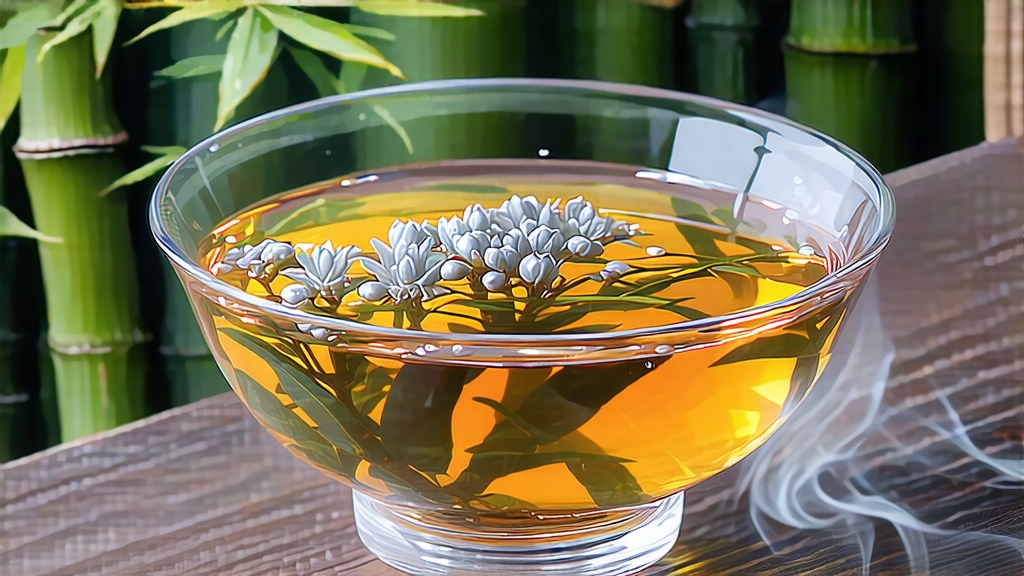
Among the six great families of Chinese tea, white tea is the least assertive yet the most revealing; it whispers where others declaim. Within that whisper, the highest voice is Bai Hao Yin Zhen—literally “White-Hair Silver Needle”—a tea so understated that its very restraint has become its signature. To the uninitiated it looks like a small handful of dried pine needles dusted with icing sugar; to the initiate it is moonlight trapped in cellulose, a liquefied sigh of the early spring Fujian dawn.
Historical echoes
The first verifiable record of “silver needle” appears in the Song-era treatise Da-Guan Cha-Lun (1107 CE), where Huizong himself praises “tea with downy tip, gleaming like silver.” Yet the modern craft was fixed only in the 1790s, when the retreat of the imperial dragon-robe workshops around Fuding left skilled seamstresses unemployed. Their delicate fingers, trained to handle the emperor’s silk, turned to the handling of tea buds; the same acute eye that once judged thread tension now judged moisture in a leaf. Thus a courtly precision entered village tea making, and Silver Needle acquired the silent elegance for which it is still traded at prices higher than gold by weight.
Micro-terroirs, macro-character
Authentic Silver Needle is plucked only from three tiny counties on the Fujian coast—Fuding, Zhenghe, and Jianyang—where red-yellow laterite soil, 68 % average humidity, and a maritime monsoon create a hothouse of slow metabolism. Within this triangle, elevation divides the style further. Buds picked below 300 m carry more jasmine-lactones and steep into a creamy, almost custard-like liquor. Those picked between 300–600 m develop higher norisoprenoids, yielding a cooler, bamboo-leaf freshness. Above 600 m, night temperatures drop so sharply that the buds synthesize extra terpenes; the resulting tea smells of mountain orchid and wet stone, and can age for decades, darkening from pale chartreuse to deep topaz while retaining a luminous clarity.
The choreography of making
Silver Needle is the only Chinese tea whose production calendar is shorter than a cherry blossom season. Picking begins when the buds reach 2.5–3 cm but before the first scale leaf unfurls—usually a 72-hour window around the Qingming festival. No leaf, no stem, no second bud; just the single spear. Within four hours of plucking the buds must be spread on bamboo trays exactly 3 cm thick so that each needle rests in its own micro-climate. For the next 36–48 hours they wither under a sun that is never allowed to scorch: workers rotate the trays every twenty minutes, tracking the azimuth like sundial keepers. At night the buds are moved indoors where a gentle wind from charcoal-heated chimneys continues the dehydration. No rolling, no pan-firing; the cell walls fracture by desiccation alone, allowing a slow, enzymatic oxidation that stops naturally at 8–12 %. The final moisture target is 5 %—a figure so low that the finished tea crackles like breakfast cereal when poured.
Naming the down
Connoisseurs read the leaf as others read handwriting. A true needle is cigar-straight, 2.8–3.3 cm long, and carries a complete “pei” (the protective down) that should be silver-white, never grey. Rub ten buds between your palms; if more than two snap, they were over-dried. Hold one against the light: the pei should lift like a halo, proof that the bud was picked before the daily photosynthetic spike—an artisanal timing that translates into cup sweetness.
Water, leaf, breath
Silver Needle is famously forgiving, yet within that forgiveness lie layers of nuance. Begin with a clear glass gaiwan (120 ml) so you can watch the choreography. Use 4 g of leaf—about thirty buds—and water just off the boil (85 °C). The first infusion, 30 seconds, is the “awakening”: the needles stand upright like miniature sceptres, then slowly drift sideways as the liquor turns the colour of early morning chardonnay. Pour without straining; the heavy buds sink naturally. Second infusion, 45 seconds, releases orchid and honeydew. By the fifth infusion extend to two minutes;